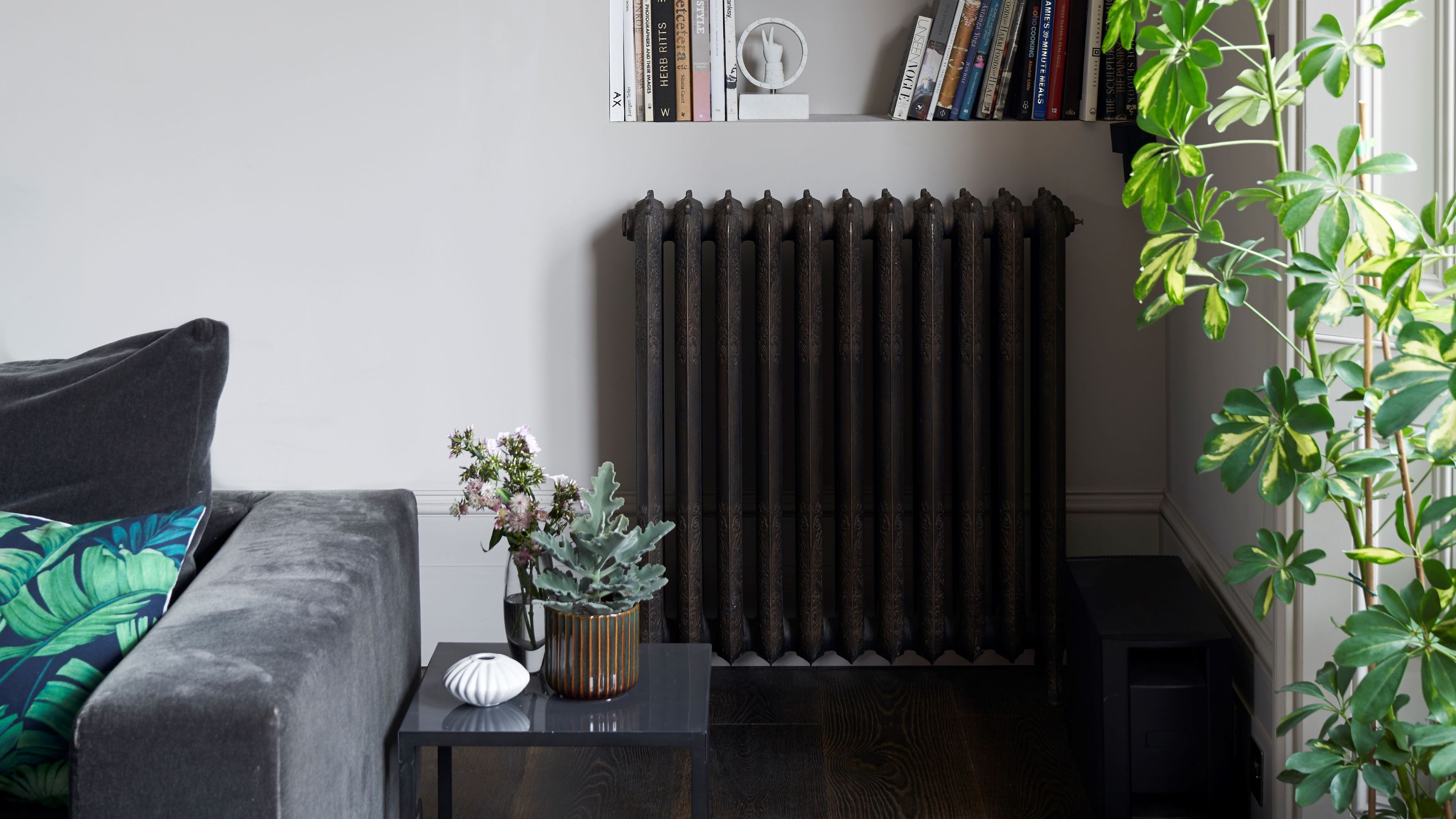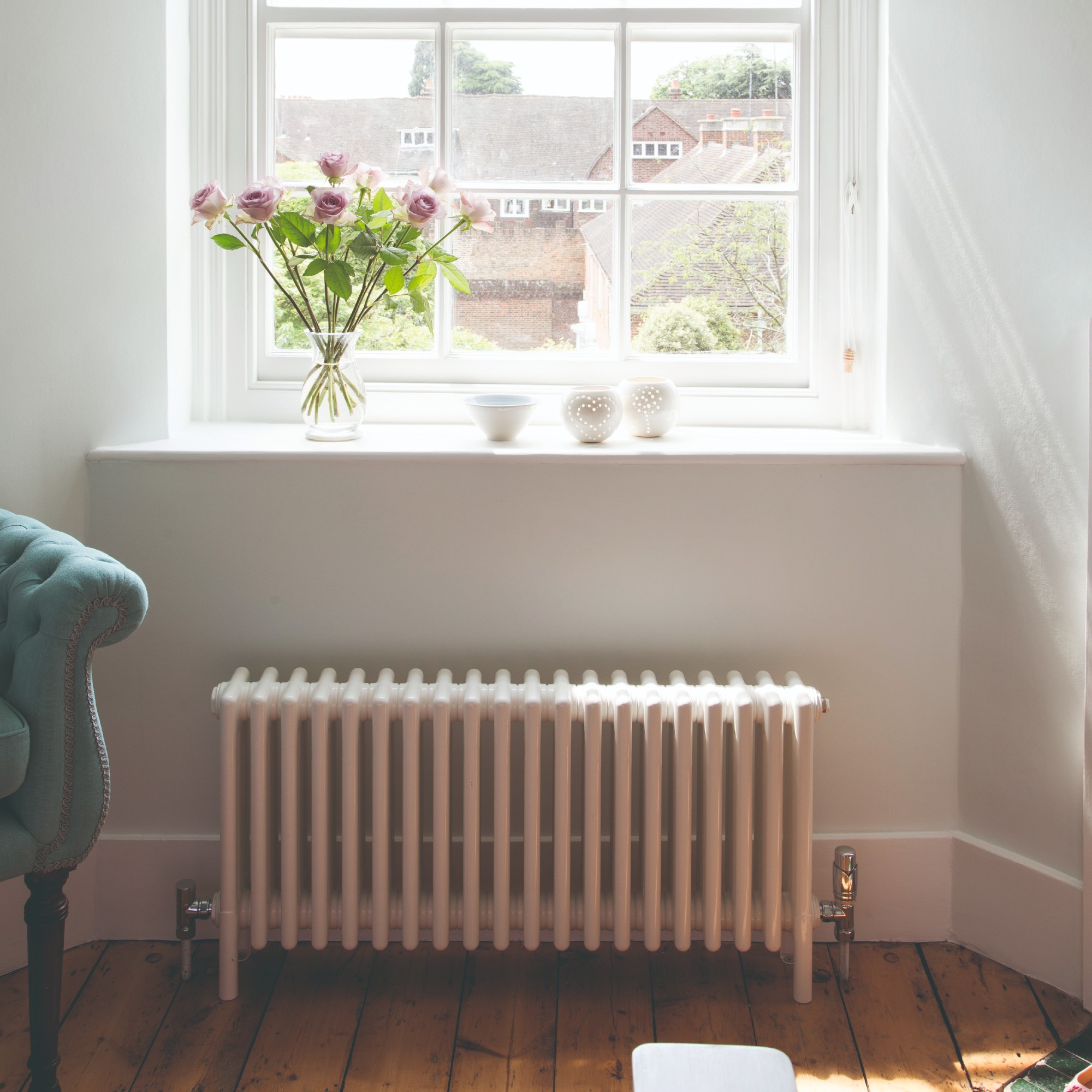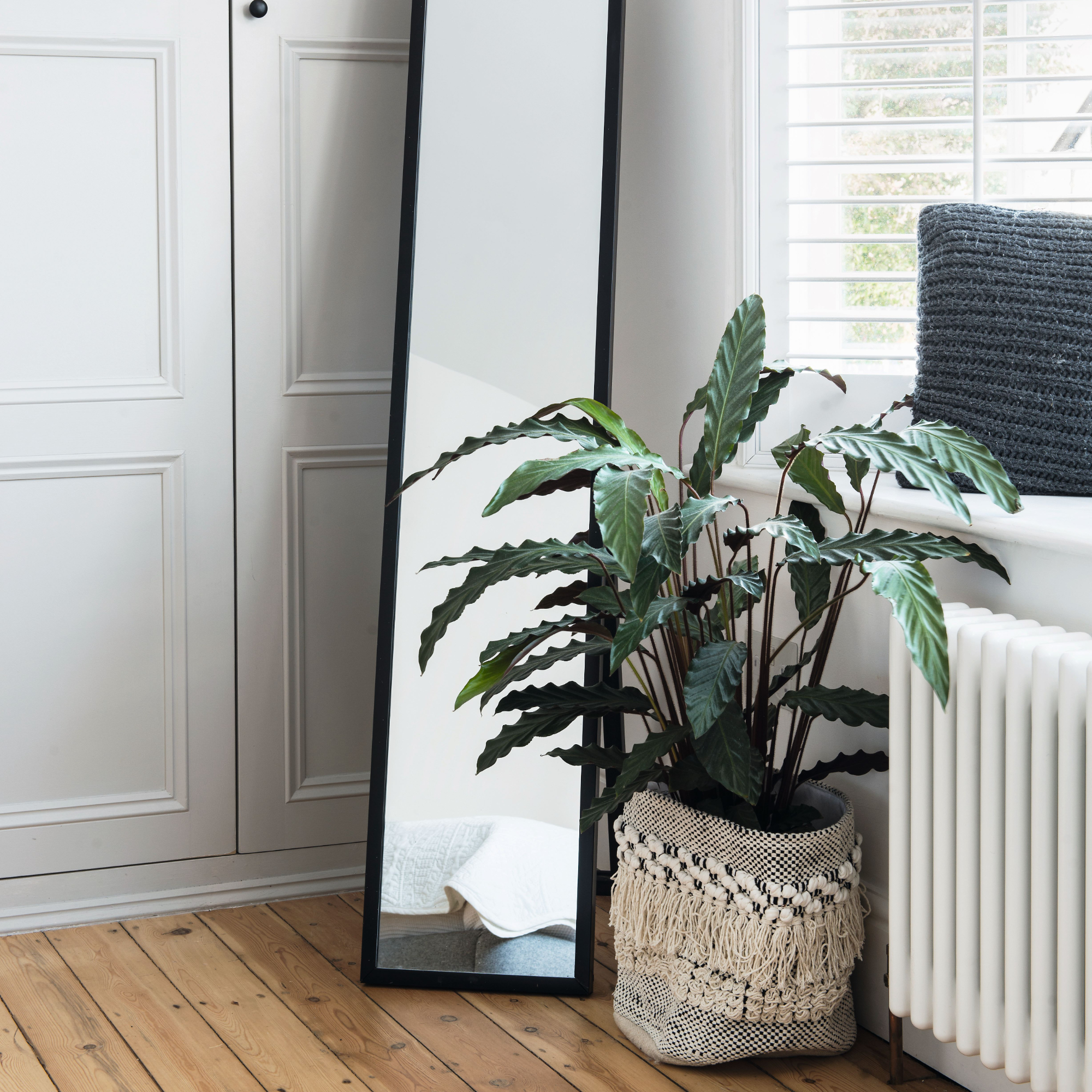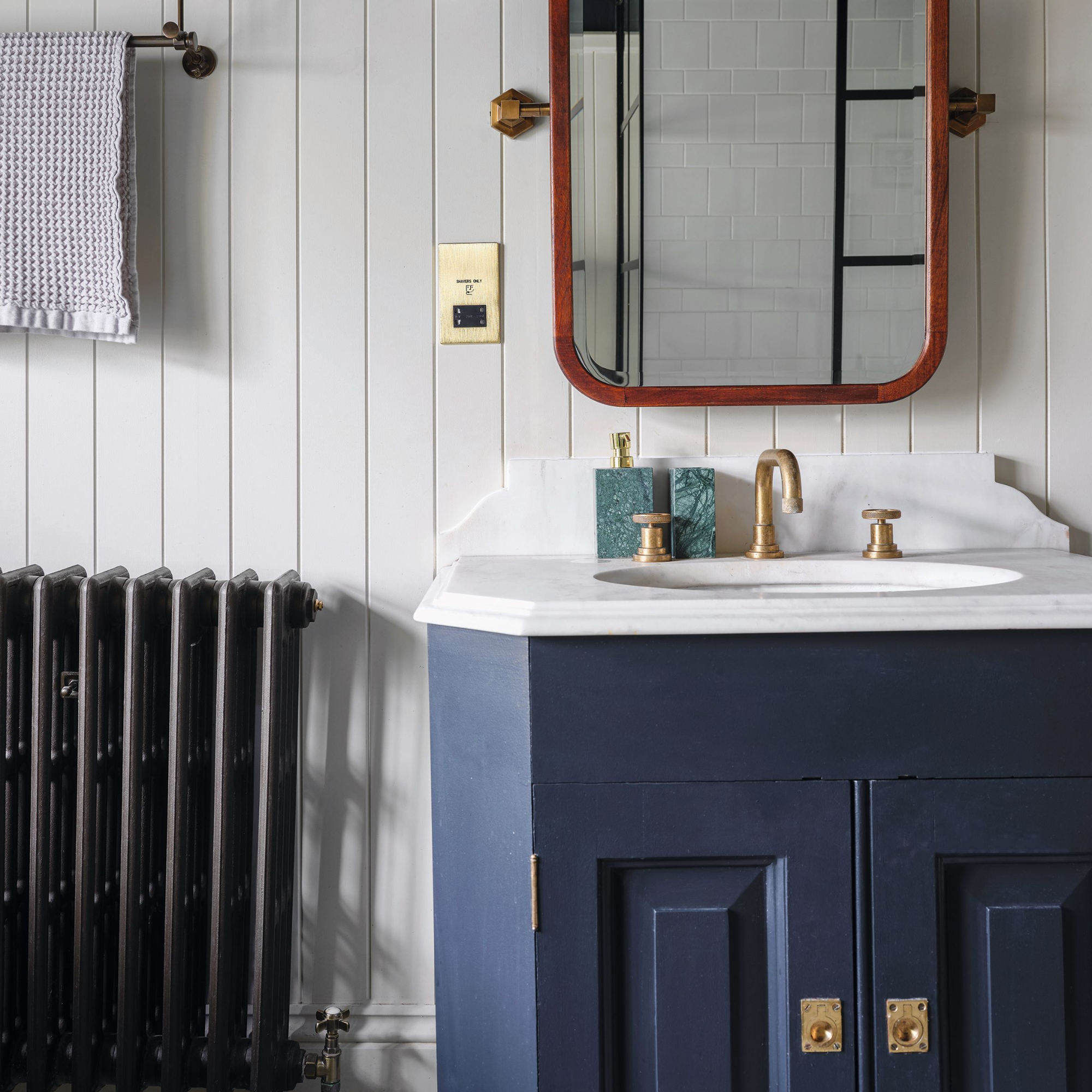How to fix a radiator leak - 5 simple steps to find the source and fix the problem ASAP
Try these DIY steps before calling out a professional


If you want to know how to fix a radiator leak, we can only assume that you’re having problems with your central heating system. And while it can be easy to assume that water trickling out of your radiator is a costly affair, there are some DIY steps you can take to potentially solve the issue.
A fully functional central heating system is the key to a happy and warm home, as well as consistent energy bills. However, it’s common for one (or more) of your radiators to spring a leak every so often. When this happens, it’s important to take quick action to prevent damage to the radiator itself, as well as your home and your monthly energy usage.
To help you out, we’ve consulted with the experts to provide you with everything you need to know about fixing a radiator leak, from finding the source of the leak to the materials you’ll need to buy to fix it. But don’t worry, the materials are cheaper than calling a plumber!
How to fix a radiator leak
‘Dealing with a radiator leak can appear daunting at first, but with the right approach, most leaks are easily manageable and won’t have to disrupt the comfort of your home,’ explains Stephen Day from iHeat. So, this is how you can do it yourself.

What you’ll need
- Towels
- Kitchen roll
- Bucket
- Spanner
- Radiator bleed key
- Plumber's tape
Step-by-step
1. Find the source of your radiator leak
Radiator leaks come in all kinds of shapes, sizes, and levels of seriousness. It’s also very easy to make a leaking radiator even worse, which is why it’s important to find the source of your radiator leak before you start any remedial work.
Stephen says, ‘The first step when it comes to addressing a radiator leak is to identify the source of said leak. Leaks will usually originate from the valve, the connections between pipes, or occasionally, a small defect in the radiator body itself, so it’s wise to give everything a once over.’
To do this, grab a towel and wipe every single inch of the radiator. When it’s completely dry, wait a short while before picking up a piece of kitchen roll or toilet paper. Then, wipe the kitchen roll over different areas of the radiator, inspecting the paper before moving on to the next area.
You may also want to put your ear close to the radiator and listen for any strange sounds coming from your radiator.
Usually, you’ll be able to spot a leak if the paper is wet or there’s a gurgling noise, dripping, or hissing noise near valves or pipes.
Just remember to be careful if you choose to do this step while your central heating system is still on.

2. Turn off and drain the radiator
You may feel inclined to start fixing your radiator leak as soon as you’ve found the leak. However, it’s important to take a step back and think about the safety risks associated with this household task.
Before you start fixing anything, you should turn off and drain your radiator. Not only that, but you should make sure that your radiator is completely cool before draining it. This means that you could be waiting 30 minutes to an hour before starting this task.
Nevertheless, patience is key when it comes to fixing a radiator leak, as you don’t want to burn yourself.
When the radiator is cold, place a bucket underneath the radiator to catch the water, and then close the thermostatic radiator and lockshield valves.
You can then remove the TRV nut and bleed the radiator to help push the water out. If you think you have some water left over in the radiator, you could also loosen the lockshield valve nut, take the radiator off the wall, and tip it down towards the bucket.
3. Fix the problem area
In most cases, a leaking radiator can be fixed using plumber’s tape. This will likely stop the leak, but it’s important to follow the instructions for the type of leak you have to really solve the problem.
- How to fix a leaking radiator valve: Radiator valves can fail over time, and sometimes a replacement is necessary. Before you fork out for a new valve, though, you can try fixing a leaking radiator valve yourself.
All you need to do is wrap the valve in plumber’s tape (PTFE tape) - like this Diall Yellow PTFE Tape from B&Q, and finish by tightening up the union nut. Then, you’re done! - How to fix a pinhole leak: ‘The majority of radiator leaks are what we call 'pinhole leaks'. These are leaks that are small and will slowly drip water,’ explains Nicholas Auckland, heating and radiator expert at Trade Radiators.
‘The best and easiest way to fix this is to pour a leak sealer solution into your central heating system. In an almost-empty central heating header tank, open the drain cock, add solution into the system until all the leak sealer is circulating. If your system is turned off, you'll have to then switch it back on to ensure that the leak sealer flows evenly around your system. It should start to take effect and seal up any small holes in your system within 24 hours.’
If this doesn’t solve your problem, it could be that the inside of your pipes or the body of your radiator has corroded, which means that you’d have to replace them entirely. - How to fix a leaking radiator spindle: Similar to a leaking radiator valve, fixing a leaking radiator spindle is very easy. For the most part, wrapping the spindle in PTFE tape should do the trick and stop the leak immediately.
You might not even need to do this, though. Sometimes, you can fix a leaking radiator spindle by simply rightening the nut with a spanner. - How to fix a leaking radiator gland: If you’ve uncovered a leak coming from underneath the plastic cap that covers the valve, there’s a high chance that you have a leaking radiator gland. Simply tightening this gland may do the trick, but to ensure you don’t have any more leaks, you may want to add some PTFE tape into the mix.
To do this, unscrew the gland nut and wrap this tape around and into the valve. You can then screw everything back together and pop the cap back on. - How to fix a rusted radiator: Nicholas says, ‘Similar to the pinhole leaks, natural corrosion that occurs inside radiators can cause problems. If you have old radiators and have never added the inhibitor to your system, then this will be more of an issue and cause holes to appear at the bottom of your radiator.’
'You'll first notice these holes in the form of brown, rusty water coming out of your radiator. Unfortunately, if your radiator has got a lot of holes, the best thing you can do is completely replace it, as chances are the holes will get bigger and it will be hard to fix.’

Nicholas Auckland is a heating and energy expert with over 10 years of experience in the industry, as well as the Managing Director of Trade Radiators. Nicholas is dedicated to finding the best heating solutions for every need, as well as optimising energy usage, reducing costs and helping others live with lower costing energy bills. Nicholas has become a trusted leader in the industry, frequently collaborating with the media and other partners to assist with cost of living issues and other home-related problems.
4. Turn the radiator back on and check for leaks
When you’ve completed the above, it’s then time to check your handiwork. The best way to do this is to turn the radiator back on and keep an eye out for leaks. As you do this, check the problem area that you fixed, as well as the other areas of your radiator.
If you’re confident that you’ve fixed your radiator leak, then give yourself a pat on the back! But if you see that the leak is still there, move on to the next step.

5. If leaking continues, call a professional
If your first attempt at trying to fix a radiator leak hasn’t gone to plan, it’s a good idea to stop there and call a professional. Although DIY solutions can fix a radiator, you can also make things worse in the process.
Stephen urges, ‘If in doubt, it’s always best to contact a professional who can assess the level of damage and give you advice on what steps to take.’
FAQs
Can a leaking radiator be repaired?
Yes! Sometimes a leaking radiator is the result of a loose nut or a slight pinhole leak. These are not serious problems and can usually be fixed with plumber’s tape or epoxy.
However, it’s important to make sure that you fully understand where the leak in your radiator is coming from before attempting a DIY solution.
How do I stop my radiator leaking?
The best way to stop your radiator leaking is to find the source of the leak and fix it. You can do this by eye or by touch and simply feel around for any wet patches or hissing sounds.
When you’ve found the source of the leak, turn off your radiator and drain it. You can then fix the radiator depending on the specific area that is leaking. This is different for each particular leak, so you really need to understand where the leak is coming from before getting started.
Now you know how to fix a radiator leak, it’s time to get your hands dirty!
Get the Ideal Home Newsletter
Sign up to our newsletter for style and decor inspiration, house makeovers, project advice and more.

Lauren Bradbury has been the Content Editor for the House Manual section since January 2025 but worked with the team as a freelancer for a year and a half before that. She graduated with a Bachelor’s degree in English and Creative Writing from the University of Chichester in 2016. Then, she dipped her toe into the world of content writing, primarily focusing on home content. After years of agency work, she decided to take the plunge and become a full-time freelancer for online publications, including Real Homes and Ideal Home, before taking on this permanent role. Now, she spends her days searching for the best decluttering and cleaning hacks and creating handy how-to guides for homeowners and renters alike, as well as testing vacuums as part of her role as the Ideal Home Certified Expert in Training on Vacuums, having spent over 110 hours testing different vacuum models to date!
-
 I finally got my hands on the sellout Morris & Co armchair from Habitat, and it looks even better in person
I finally got my hands on the sellout Morris & Co armchair from Habitat, and it looks even better in personIt's back in stock, and well worth the wait
By Rebecca Knight
-
 How to stratify seeds – gardening pros swear by this secret to a thriving garden
How to stratify seeds – gardening pros swear by this secret to a thriving gardenThis little-known secret is a must for a lush garden this year
By Kayleigh Dray
-
 Cinema sofas are this year's breakout furniture trend, but are you a fan of this controversial sofa style?
Cinema sofas are this year's breakout furniture trend, but are you a fan of this controversial sofa style?Let us know in the comments
By Rebecca Knight